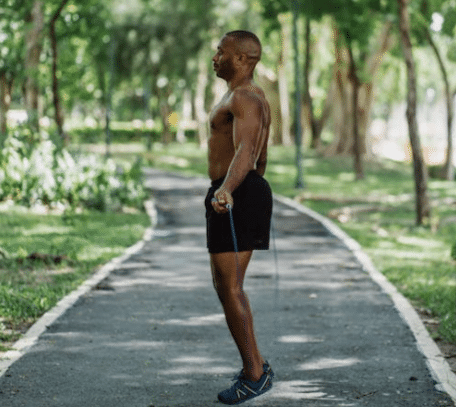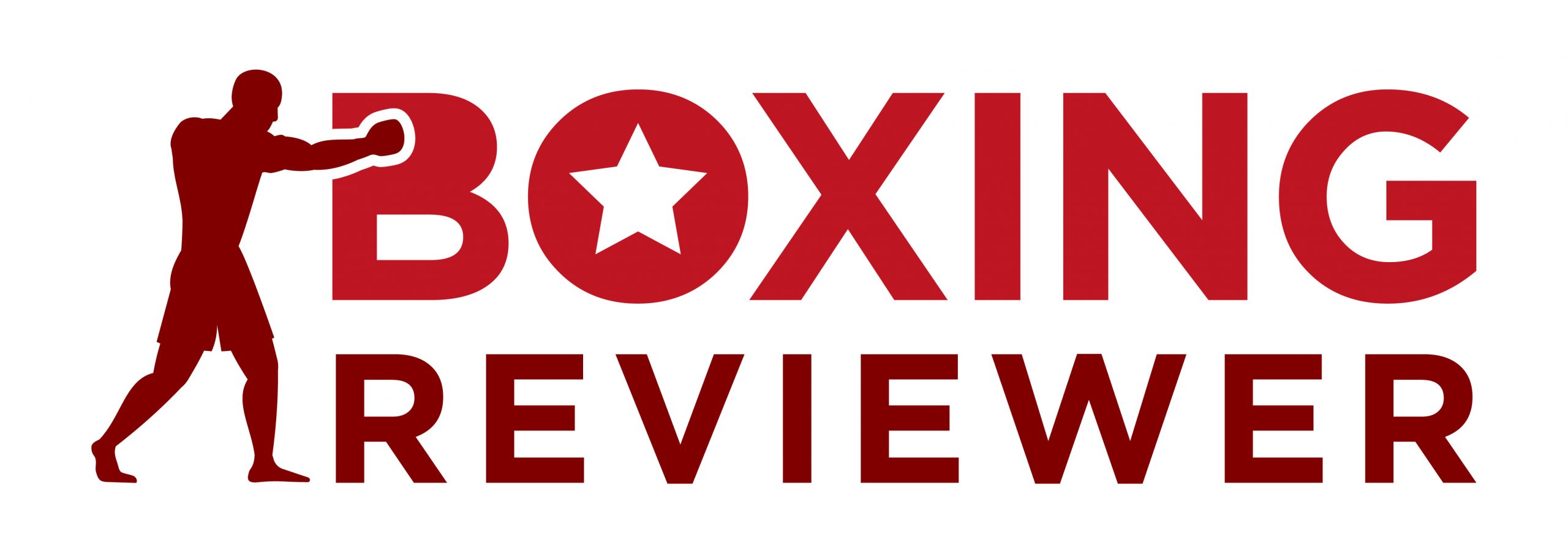Ever wondered why boxers jump rope? From old-time legends like John L. Sullivan to today’s top pound-for-pound boxers like Manny Pacquiao, boxers love their jump ropes.
Turns out, jumping rope can help make you a better boxer. And in this post, we’ll cover jumping rope techniques to help you hone your skills. But before then,
How Does Jumping Rope Make You a Better Boxer?
Besides helping improve your cardiovascular health and sharpening mental focus, there are other reasons boxers jump rope, more so when it comes to enhancing fighting techniques.
It Helps Condition Your Upper and Lower Body
Jumping rope is a powerful strategy to condition the upper and lower body. As a boxer, you need your hands, eyes, and feet to work together seamlessly, whether training or in the ring.
Jumping rope trains the body to sync these parts flawlessly. Think of it as a tool to help you build a bridge between your upper body, lower body, and brain.
It Helps Improve Your Footwork
Jumping rope trains you to “stay light,” keeping your weight on the balls of your feet and swiftly shifting your body with that weight distribution.
It is a method to teach your body the movement patterns similar to how a boxer navigates the ring.
It Helps Improve Bone Density
Bone density is essential, especially for female boxers, because of the increased osteoporosis risk. As a plyometric exercise, jumping rope demands significant force and impact in a brief time frame.
Therefore, including jump rope and similar plyometric drills in training can lead to better bone density.
And when you consider the link between fractures in later years and mortality rates, it’s clear that jump rope practices could play a role in promoting longevity.
Jump Rope Techniques to Make You a Better Boxer

With that out of the way, let’s dive into the jump rope techniques to help enhance your boxing skills.
Front to Back
I’ll assume you’re familiar with the basic “two feet together” jump rope style, as it’s commonly known.
There’s a variation called front to back.
As the name suggests, the style involves jumping subtly forward and backward instead of staying in the same position while you jump. When doing the front-to-back jump, you need to ensure that you maintain a consistent pace and rhythm.
The main difference between this style and the basic jump is where you land. With the front-to-back, you need to alternate the landing — a few inches in the front, then back to your starting position.
Incorporate this technique into your regular jump rope routine for the best results.
Front-to-back jumps engage your lower abdominal and hip muscles more, enabling you to move back and forth smoothly inside the ring.
Side to Side Style
You might already know the front-to-back jump rope style we discussed earlier.
Another variation to consider is the side-to-side technique. With this style, you’ll jump laterally from one side to the other instead of forward and backward.
As a rule of thumb, keeping a consistent pace and rhythm when doing the side-to-side jumps is essential. Think of it this way: imagine a straight line right between your feet when standing. The goal is to jump from one side of that line to the other with each hop.
Side-to-side jumps engage your oblique muscles, strengthening the sides of your torso and improving your agility in the ring.
The Boxer Skip Style
Once you’ve mastered the front-to-back and side-to-side rope jumping techniques, it’s time to introduce boxing-specific footwork: the boxer skip.
With this style, you need to keep your feet a few inches apart and maintain a rhythm similar to regular jump roping. The key is to alternate the weight between the balls of each foot. The technique mimics running but focuses the weight on the balls of your feet.
While it may feel challenging initially, persistence pays crucial.
Mastering the boxer skip enhances your rhythm and significantly boosts your agility and footwork, whether you’re in the ring or practicing around a punching bag.
Running In Place Style
Once you’ve got the basics down and want to elevate the cardio aspect of your jump rope routine, consider the “running in place” style. The technique fuses the cardiovascular advantages of high-knee running with regular rope jumping.
The idea is pretty simple: jump rope while simulating running on the same spot. While executing this, raising your knees as high as possible is vital.
Start with your usual jump rope rhythm, or incorporate the boxer shuffle.
Transition to jogging in place, ensuring each foot lifts off the ground alternately. As you become more comfortable, increase the height and speed of your leg raises until you’re effectively doing “high knees” combined with your jump rope.
Double-Unders Style
If you want to intensify your calf workout and boost your cardiovascular challenge, the “double-unders” style is worth considering. As the name suggests, the goal is to allow the rope to pass under your legs twice within a single jump.
The technique demands swift rope rotation and slightly higher jumps to ensure the double pass.
Begin with a standard jump rope pace, feet together. Gradually increase the rope’s turning speed until it feels faster than your regular jumping pace. Then, bit by bit, raise the height of your jumps while maintaining rope speed.
Remember, it’s not about achieving extreme jump heights. You’re aiming for roughly twice your usual skipping rope height. Consistency, rhythm, and timing are essential, rather than attempting exceptionally high jumps.
How to Prevent Injuries When Jumping Rope
While jumping rope seems easy, you need to take the necessary precautions to avoid injuries. Here’s a rundown of tips to help you stay safe when jumping rope.
Warming Up Properly Before Starting
Engaging in any exercise without a proper warm-up increases the risk of injury, a principle especially true for jump rope workouts.
A warm-up gradually prepares the body for the physical demands of jumping rope by increasing blood flow to the muscles and joints.
In addition, the enhanced blood flow makes your muscles more flexible and less prone to strains or pulls.
Furthermore, a good warm-up raises the body’s core temperature, improving muscle elasticity.
What’s more, warming up helps mentally prepare you for the workout ahead, setting a focused tone for the session. Techniques like dynamic stretching or light cardio can be incredibly effective.
For jump rope specifically, it’s beneficial to begin with a slower pace, incorporating a simpler style, before diving into more intense or complex routines.
Properly warming up is a preventative measure against injuries and ensures a more productive and efficient workout.
Wear the Appropriate Shoe
Just as a craftsman values the right tools, a jump boxer’s shoes are vital to their workout. Selecting the right footwear is more than just a matter of comfort; it’s a protective measure.
Jumping rope involves repetitive impact. Without the proper support, especially in the arch, one can experience undue stress on the feet, leading to pain or injuries over time.
Shoes with good arch support disperse the force of each jump evenly across the foot, reducing the risk of strain on any single area.
Moreover, quality footwear provides a stable base, aiding balance and preventing missteps or awkward landings that can lead to ankle or knee injuries.
Investing in boxing shoes designed specifically for jumping rope is essential, avoiding worn-out sneakers that no longer provide the necessary cushioning and support.
The right shoes act as a buffer, ensuring safety while enhancing the efficacy of your jump rope sessions.
Jump On a Soft, Flat Surface
The surface on which you jump rope is pivotal in injury prevention.
Jumping on hard surfaces like concrete or tile can amplify the impact on joints, particularly the knees, ankles, and lower back. Over time, this can lead to wear and tear or even acute injuries.
In contrast, softer surfaces, like gym mats or wooden floors, help absorb some of the impact, reducing the strain on your joints.
Additionally, a flat surface ensures that the rope moves uniformly, minimizing the chances of tripping or getting the rope caught on surface irregularities. Uneven terrains can compromise your balance, making awkward landings more likely.
So, be sure to find a soft spot and a level spot for jump rope exercises.
Maintain Proper Posture and Technique
Maintaining the correct posture and technique while jumping rope is paramount to preventing injuries.
Proper form ensures that the body’s muscles and joints function harmoniously, mitigating undue stress on any particular area.
When jumping, you should keep the head aligned with the spine, shoulders relaxed, and elbows close to the body. The alignment ensures optimal force distribution, reducing the chances of strains.
Furthermore, using wrists to turn the rope, rather than full arm rotations, makes the motion more efficient and lessens fatigue. With minimal elevation, jumping on the balls of the feet also reduces the impact on the knees and ankles.
Incorrect technique, on the other hand, can lead to overcompensation by specific muscles, increasing the risk of overuse injuries.
Regularly revisiting and refining one’s form, perhaps even under the guidance of a coach or trainer, is vital.
Avoid Overtraining; Give Muscles Time to Recover
Moderation is vital in any fitness regimen.
While dedication and consistency are commendable, pushing the body incessantly without adequate rest can be detrimental.
Overtraining, or not allowing the muscles sufficient recovery time, can lead to fatigue, decreased performance, and a heightened risk of injuries like strains or sprains.
Muscles grow and repair during periods of rest, particularly during deep sleep. Skipping these recovery periods means muscles are continually stressed without healing, making them more susceptible to injury.
In addition, overtraining can also weaken the immune system, making one more prone to illnesses. Recognizing signs of overtraining, such as prolonged soreness, fatigue, or decreased motivation, is also crucial.
So, while regular training is vital for improvement, it’s equally important to listen to one’s body and allow it the rest it requires to function optimally and safely.
Frequently Asked Questions (FAQs)
Does Jumping Rope Make You a Better Boxer?
Yes, jumping rope does make you a better boxer. Jumping rope enhances cardiovascular fitness, coordination, agility, and, most notably, footwork.
By regularly engaging in jump rope exercises and drills, a boxer can experience significant improvements in footwork, hand speed, and overall coordination, all of which are essential skills for boxing.
What Jump Rope Do Most Boxers Use?
Most boxers use weighted jump ropes for their advanced exercises. These ropes help fighters build speed and muscle power, training them to be explosive even while carrying extra weight.
Should I Jump Rope Every Day for Boxing?
No, you should not jump rope every day for boxing. While boxers incorporate jump roping frequently into their training, it’s unnecessary to do it daily.
Incorporating varied training modalities throughout the week is essential, and allocating time for the body to rest and recover is equally important.
Jump Way to Becoming a Better Boxer
Learning jump rope techniques is a cornerstone of effective boxing training. The rhythmic synchronization of hand-eye coordination, footwork, and stamina enhancement go a long way in making you a better boxer.
Each technique serves to fine-tune specific aspects to help hone your boxing prowess.
However, the effectiveness of jumping rope also depends on the jump rope you choose.
So, make sure you’re picking a good rope for your training regimen. Check out my collection of the best jump ropes for boxing.


0 comments